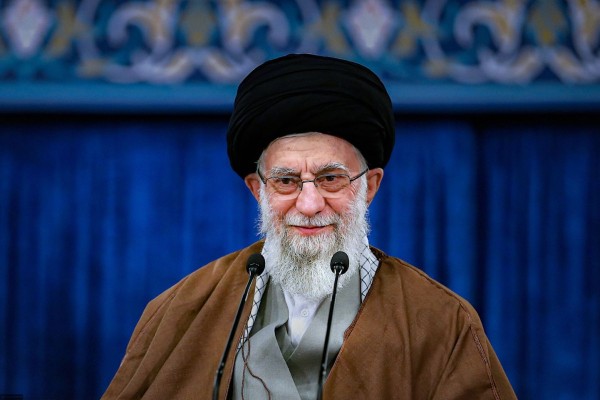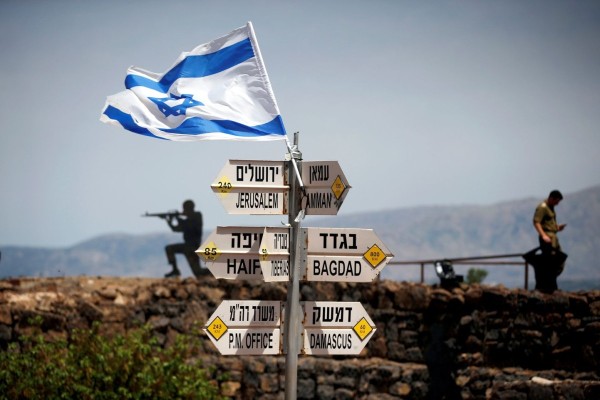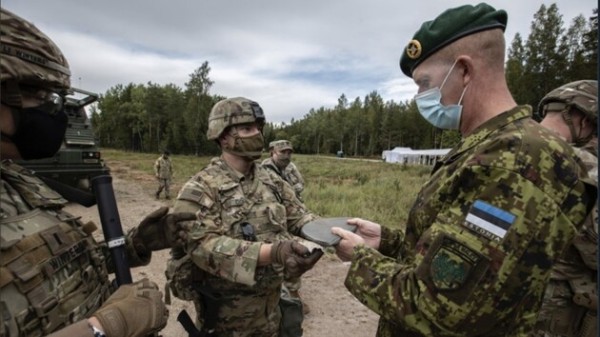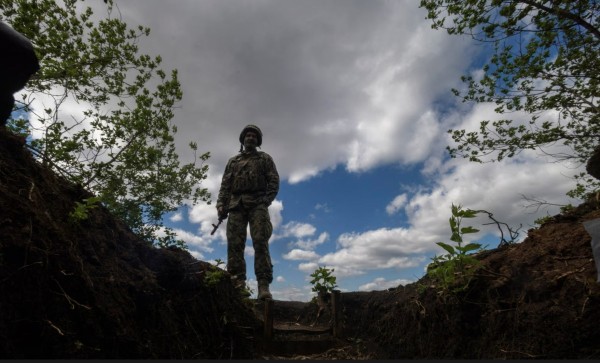In San Francisco from June 28th thru July 01st, 2013:
Gone are the days of true Estonian statesmen who were either massacred or deported to Siberia by the “liberators” from the East. Estonia presently has a Foreign Minister by the name of Urmas Paet who is bent on signing an unwanted and highly unpopular (87% vs. 13% of the polled Estonian population) border treaty with Russia. Estonia’s media press, for reasons unknown, is presently silent on the subject, and Mr.Urmas Paet, knowing Estonians’ convictions and their opposition to the planned border treaty, expects to gather steam during his trip to San Francisco to thereafter demonstrate to the Estonian population (deceptively) his “wisdom” and “statesmanship”.
Hereunder, we ask several very directed and to-the-point questions that must be directed to Mr. Urmas Paet at the said festivities. The time is ripe and there is no time left. A public referendum on the subject of whether or not a new “border treaty” is wanted by the Estonian population must urgently be demanded, lest Mr. Paet commits the unthinkable… the intended bilateral signature of a new so-called border treaty which will most assuredly give the death blow to the Peace Treaty of Tartu of February 02nd, 1920, between the Republic of Estonia and the Russian Federation.
The above-mentioned document is ESTONIA’S BIRTHRIGHT WHICH MUST UNEQUIVOCALLY BE RECOGNIZED BY PRESENT-DAY RUSSIA!
Questions to address to Mr. Urmas Paet, Foreign Minister of the Republic of Estonia:
1) Olete korduvalt väitnud, et kavandatav uus piirilepe on Eestile kasulik, kuna see tugevdavat Eesti julgeolekut, samas kui piirileppe sõlmimatajätmine kahjustaks Eesti julgeolekut. Milles väidetav kasu ja kahju täpselt seisneb? Kas Venemaa ründaks Eestit sõjaliselt, kui Eesti jätaks uue piirileppe sõlmimata? Kas Euroopa Liit ja NATO sellisel juhul siis Eestit ei kaitseks?
You have repeatedly maintained that a new border treaty would be beneficial for Estonia since it would strengthen Estonia’s security and that the leaving unsigned of such a new border treaty would be detrimental to its security. Wherein lie those benefits and detrimental aspects? Would Russia invade Estonia if Estonia did not sign such a border treaty? Would the European Union and NATO desist from defending Estonia in such case?
2) Enne Eesti liitumist NATO-ga ja Euroopa Liiduga põhjendati uue piirileppe sõlmimise hädavajalikkust sellega, et ilma piirileppeta ei võetavat Eestit ei NATO-sse ega ka Euroopa Liitu. Ometi võeti Eesti mõlemasse organisatsiooni vastu. Miks oli siis toona üldse tarvis seda eksitavat põhjendust kõikjale levitada?
Prior to joining NATO and the EU it was then reasoned that Estonia would not be admitted to either organization in the absence of a border treaty with Russia. Nonentheless, our country was admitted to both organizations. Why was it then necessary to disseminate such deceptive reasoning to the Estonians?
3) Piirilepe oma suure naabriga, kes okupeerib tervelt kolmandikku tema territooriumist, puudub ka Küprose Vabariigil. Ometi võeti Küpros Euroopa Liitu, ilma et talt oleks nõutud piirileppe sõlmimist Türgiga. Miks ka Eesti ei võiks praegu järgida Küprose eeskuju? Kõnelemata Jaapanist, kellel samuti pole ei rahu- ega piirilepingu järele Venemaaga kiiret?
One-third of Cyprus’ territory is occupied by its large neighbor but a border treaty between Turkey and Cyprus does not exist. Cyprus was nonetheless admitted into the European Union despite the lack of such a border treaty. What would be wrong in Estonia now following the example set by Cyprus? Not to mention Japan which, likewise, is not rushing to sign neither a peace treaty nor a border agreement with Russia?
4) Eesti kõrged ametiisikud eesotsas president Toomas Hendrik Ilvesega on korduvalt nõudnud Gruusia territoriaalse terviklikkuse taastamist. Miks need ametiisikud pole nõudnud Eesti territoriaalse terviklikkuse taastamist?. Või siis teise lahendusena - pole soovitanud Gruusia juhtkonnal sõlmida Venemaaga uut piirilepet, millega Gruusia vabatahtlikult loobuks Venemaa võimu all olevast õigusjärgsest territooriumist? Millega on seletatav seesugune eri mõõdupuude kasutamine muidu "väärtustepõhist poliitikat" kuulutavate Eesti riigijuhtide puhul?
Estonia’s statesmen, above all President Toomas Hendrik Ilves, have repeatedly demanded the restoration of Georgia’s territorial integrity. Why haven’t Estonia’s statesmen likewise demanded the restoration of Estonia’s territorial integrity? Conversely, why haven’t Estonia’s statesmen recommended that Georgia sign a border treaty, voluntarily ceding to Russia those portions of Georgian territory which recently were occupied by Russia? How do Estonian statesmen and its foreign policy experts explain such blatant use of differing yardsticks?
5) Eesti Põhiseaduse paragrahv 2 ütleb: "Eesti Vabariigi maa-ala, territoriaalveed ja õhuruum on lahutamatu ja jagamatu tervik. Eesti on riiklikult korralduselt ühtne riik, mille territooriumi haldusjaotuse sätestab seadus." Kui Eesti-Vene uue piirileppega loovutatakse Venemaale umbes viis protsenti Eesti õigusjärgsest territooriumist -- kuidas saab seda teha oludes, kus Põhiseadus nõuab, et territoorium peab olema lahutamatu ja jagamatu tervik? Kas okupatsiooni tingimustes muudetud riigipiiri saab õiguspäraseks üldsegi pidada? Kas eespool mainitud Põhiseaduse paragrahv 2 on tühistatud? Põhiseaduse järgi saab seda paragrahvi tühistada üksnes rahvahääletusel, kuna ta kuulub üldsätete hulka. Üldsätete kohta aga ütleb Põhiseaduse paragrahv 162. Paragrahv ühemõtteliselt: "Põhiseaduse I peatükki "Üldsätted" ja XV peatükki "Põhiseaduse muutmine" saab muuta ainult rahvahääletusega." Vastavat rahvahääletust pole aga korraldatud. Millal see teostatakse?
Estonian Constitution’s Paragraph 2 (in loose translation) says: “The Estonian Republic’s land, water, and airspace are indivisible and whole. Estonia is, as a nation, whole and indivisible”.
Should the (new) Estonian-Russian border treaty come to pass and should approximately 5.2% of Estonia’s legal territory be therewith ceded to Russia, then how could one justify the Constitution of the Republic of Estonia? Would in such case the affected Paragraph of the Estonian Constitution be nullified? As clearly stated in Paragraph 162 of the Constitution, only by public referendum can such a modification to the Constitution take place.
Since such a public referendum has not yet been initiated in Estonia, please inform us as to when the required public referendum will take place?
6) Kas Teie ja teistegi Reformierakonna poliitikute valimislubaduste hulgas viimatistel Riigikogu valimistel oli ka lubadus loovutada umbes viis protsenti Eesti õigusjärgsest territooriumist teisele riigile? Või ei olnud? Palun esitatud küsimustele vastata lühidalt ja avameelselt.
Was it a part of your election platform and that of your other colleagues in the Reform Party to cede approximately 5.2% of Estonia’s integral territory to Russia. Or was this not a part of the Reform party’s platform? Please respond to the questions tersely and open-heartedly.
7) Kui Eesti eksiilvalitsus andis omal ajal volitused üle Eesti Vabariigi valitsusele, siis tegi ta seda üksnes tingimusel, et taasiseseisvunud Eesti Vabariigi juhtkond järgib 1920.aasta Tartu rahulepingut ja sellejärgset piiri. 1991.aastal taasiseseisvunud Eesti juhtkond kohustuski seda tegema. Miks on Eesti Vabariigi praegune valitsus otsustanud toonast lubadust murda? Kas ei anna seesugune käitumine tunnistust riigireetmisest otse valitsuse tasemel?
Following liberation from Soviet communist occupation in 1991, the Estonian Government in exile handed over the reins of government to the restored Estonian Government under condition that the leaders of the present-day Estonian Government adhere to the Peace Treaty of Tartu of 1920 along with the therein specified Estonia’s eastern national border. The representatives of the post-Soviet Estonian Government committed themselves to doing so at that point in time.
Why has the present Government of Estonia chosen to break with and violate its commitments ? Wouldn’t such behavior give testimony of high treason at the State level?
MÄRKIGE:
Ülal ära toodud küsimuste esitamisel välisminister härra Urmas Paetile tasub meeles pidada, et tegemist on poliitilise figuuriga, kellel on tavaks Kremli-Meelne kaval kõnekeel ning kes vastaks küsimustele meelsamini ebaselgel ja umbkaudsel viisil. Peaks selline olukord San Francisco festivalil kujunema, pole sugugi ebaviisakas, pigem vägagi oluline, küsitud lauset talle korrata, nõudes Välisministrilt selget ja vassimisest vaba vastust.
Palun kindlustage Eesti ajakirkanike kohalolekut kõigil küsimuste ja vastuste esitamistel.
In posing such questions to Mr. Urmas Paet please bear in mind that he, above all, is a politician and a cunning orator who would rather answer the question(s) in a highly unclear and devious manner. Should this be the case, then it would be appropriate and very thinkable to re-address the said question(s) to him, demanding a clear stance on the part of the Foreign Minister. Please assure the presence of the Estonian press at all question-answer appearances.
Signed:
- Tõnu Kalvet; Journalist, translator
- Rein Koch; Physicist
- Kalju Mätik; Engineer, former GULAG prisoner of conscience
- Mart Niklus; Biologist, former GULAG prisoner of conscience
- Tõnu Ojamaa; Engineer, farmer
- Erwin Pari; Engineer, Estonian-American
- Henn Põlluaas; Publicist, Mayor of Saue
- Osvald Sasko; Human rights activist
Contact person:
Mart Niklus
Vikerkaare 25
Tartu, Estonia
E-Mail:
Date: June 26th, 2013
Manuses: Piirileppealase konverentsi deklaratsioon Tallinnas, 01.06.2013
Enclosed: Declaration of the Conference of June 01st, 2013, Tallinn
Conference in Tallinn, June 01st, 2013
“IN DEFENSE OF THE PEACE TREATY OF TARTU OF 1920”
(synopsis)
The present government of the Republic of Estonia intends to cede five percent of Estonia’s territory to Russia through a new border treaty.
Paragraph §122 of Estonia’s Constitution states: “Estonia’s land border with Russia is fixed by the Peace Treaty of Tartu of February 02nd, 1920”; subsequently the Peace Treaty was recognized internationally.
Paragraph §123 of Estonia’s Constitution states: “The Republic of Estonia shall not conclude treaties which contradict Estonia’s Constitution.”
Hence, the new border treaty in question would contradict the
Peace Treaty of Tartu of 1920, Estonia’s Constitution, and international law and the ratification of such a treaty would be a breach of §122 of the Constitution.
Such a document would not be binding.
The signing of the new border treaty in question would override the Tartu Peace Treaty of 1920 and would constitute de jure recognition by Estonia of the Nazi-Soviet pact of 1939. This would imply, incorrectly, that Estonia was created as a new state in 1991, compromising Estonia’s sovereignty, as Russia would accelerate its meddling on behalf of ethnic Russians in Estonia.
Russia’s unresolved border disputes with its many neighbors have not implied any sort of hostility against Russia nor provoked its isolation; nor would hostilities ensue in the absence of such a defective border treaty. Hence Estonia is not in need of a “new” border treaty with Russia, as purported by the Estonian Foreign Ministry.
By international law, altering borders must first be endorsed by popular mandate. The current initiative by the Estonian Government calls for a referendum. Furthermore, 87% of the polled public opposes a new border treaty.
Estonia’s unratified border treaty of 2005 with Russia is unacceptable to Estonians. This should now be officially rejected by Estonia, as it was by Russia in 2005.
The Conference declares the bi-lateral Peace Treaty of Tartu of 1920 to be in effect, in whole, and must receive Russia’s uncompromised recognition.
Tallinn, Estonian National Library, June 01st, 2013
TO ESTONIAN-AMERICANS ATTENDING THE LEP-ESTO2013 FESTIVITIES ENG - EST
Eestlased USAs | 27 Jun 2013 | EWR
Eestlased USAs
TRENDING



























